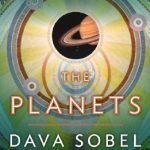I am an active Christian. I believe God created the world. I also believe we do not know how God created the earth, and I do not believe in a literal, seven-day creation. All I have learned about the big bang theory and the evolutionary history of the earth has only solidified the testimony that I have that God is behind it all.
That said, I’m always careful about which books I share with my kids that deal with the big bang, the expanding universe, and evolutionary biology. Some of these texts for kids disparage those that believe in God as creator or otherwise dismiss the possibility of both creationism (i.e., God created the earth) and the evolutionary sciences as evidenced by science as possibly co-existing.
How to Make a Planet by Scott Forbes (Kids Can Press, March 2014) teaches about the big bang and early evolutionary history just right. It focuses on science, based on the evidence we can see around us. Even the title seems to underscore that someone could make a planet. While the book does not have a discussion of God or a “creator” in a religious sense, it also does not eliminate the fact that it could have been created by a higher power purposefully. The “instructions,” although written to the two children that appear on each of the pages, could just as easily have been directed toward God creating the world in His way.
In addition, because it is written as a “how to” manual to creating a universe, How to Make a Planet likewise has a tone that adds humor to the complexities discussed. As the earth ages, a young boy and girl act as if they are the creators of a giant planet: they “stir” the universe’s soup, help the earth find the right place to live, and urge the small creatures to try life on land.
How to Make a Planet covers science in all directions: physics (how the big bang began the expanding universe), earth science (how volcanoes and earthquakes change the face of the earth), and biology (how various creatures related to each other). I felt like I learned a lot about science by reading it myself!
In short, How to Make a Planet is an ideal book about evolutionary science for parents and students that cannot or do not want to mix religious belief into the science of the creation of the earth. I’d highly recommend it to those who seek this kind of book.
As is often the case with books relating to evolutionary science as well as religion, people may have differences of opinion as to what is right for their own children. Please keep that in mind while leaving comments below, and remain courteous to others!
Note: I received a digital review copy of this book from the publisher for review consideration.





